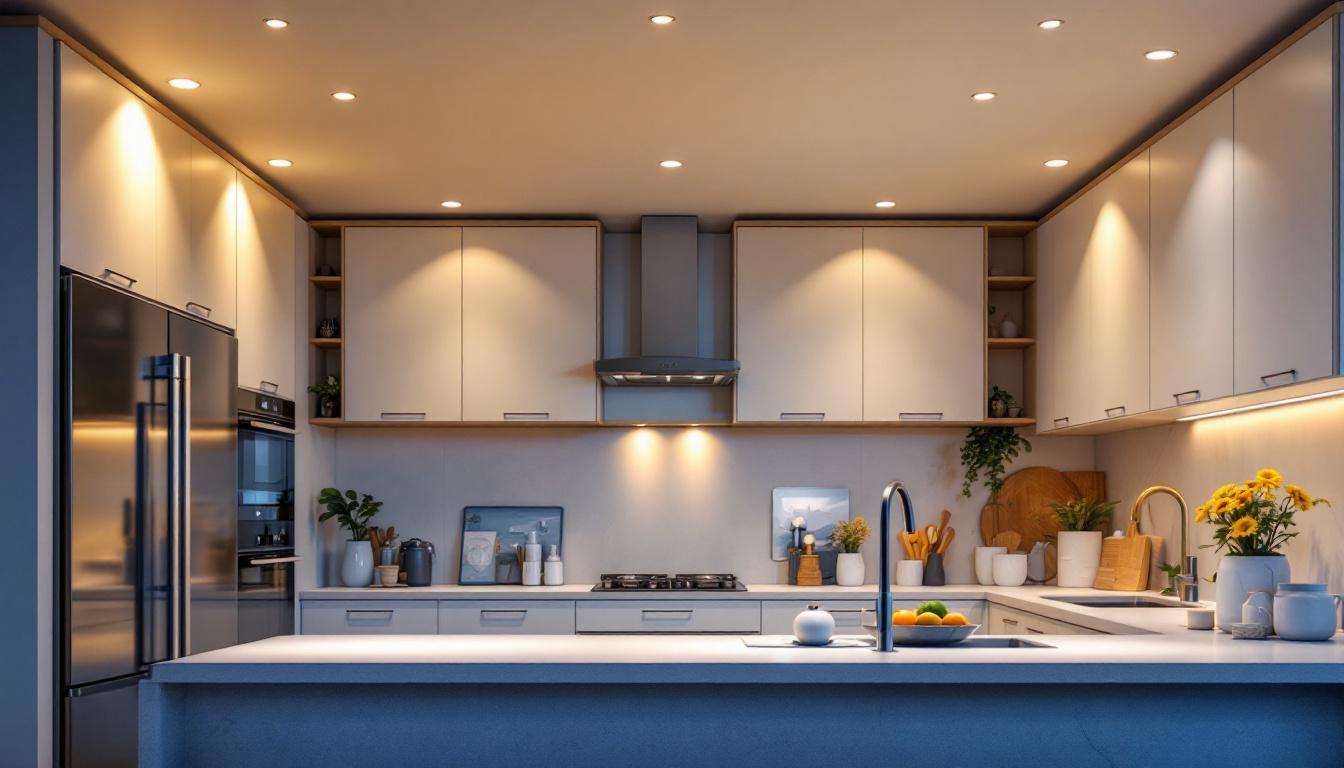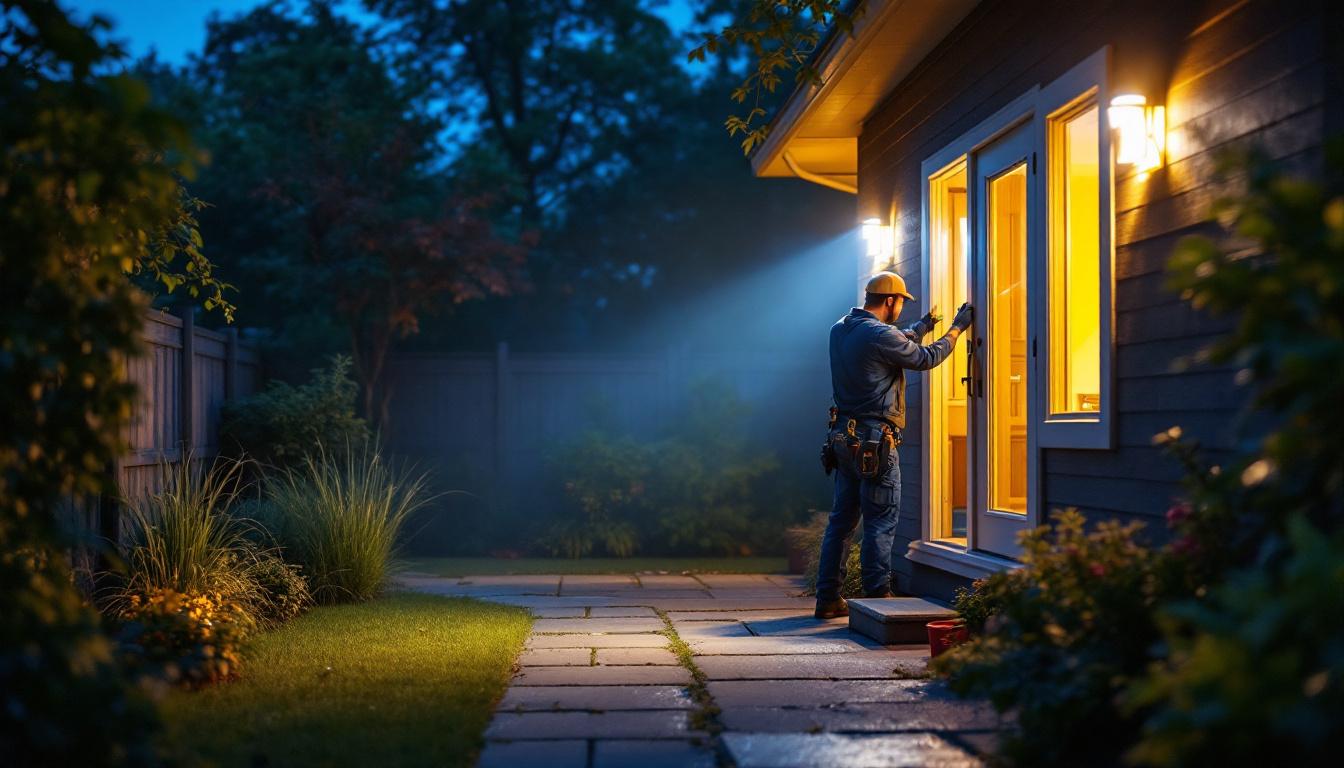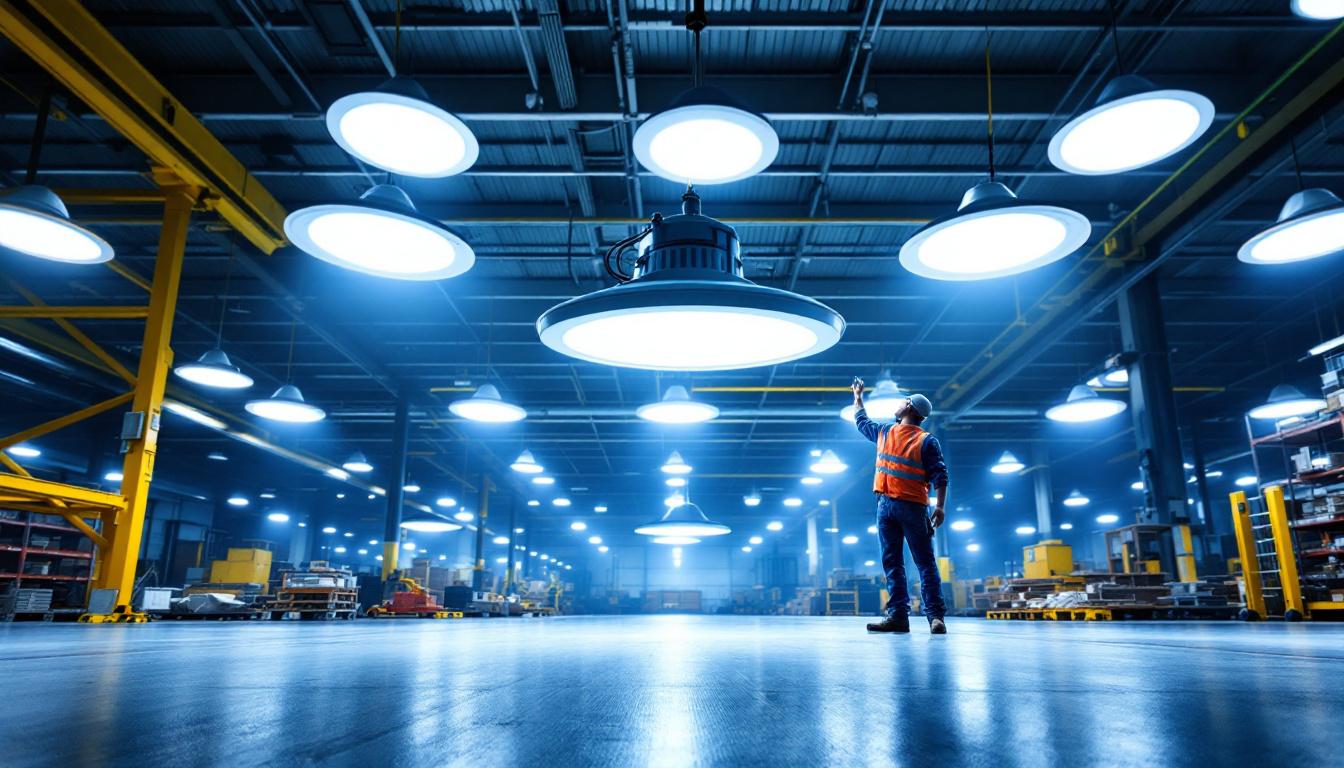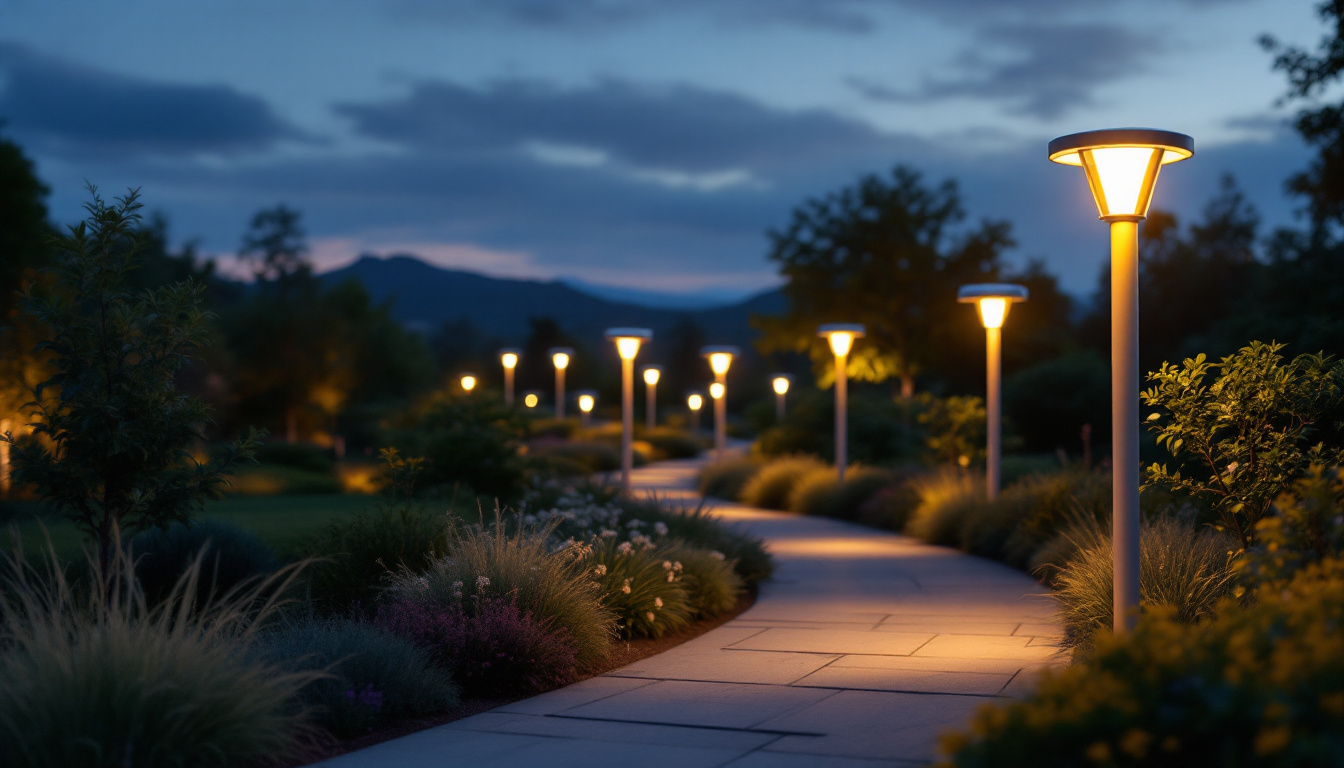
Recessed lighting has become a staple in modern kitchen design, offering both functionality and aesthetic appeal. As kitchens evolve into multifunctional spaces, the need for effective lighting solutions has never been more critical. Recessed lights, often referred to as can lights or pot lights, provide a sleek and unobtrusive way to illuminate these vital areas.
In a kitchen, proper lighting is essential for various tasks, from meal preparation to entertaining guests. The right size and placement of recessed lights can significantly impact the overall ambiance and functionality of the space. Understanding the evolution of recessed lighting can help contractors make informed decisions about their installations.
Traditionally, kitchens relied on overhead fixtures, such as chandeliers or pendant lights, to provide illumination. These fixtures often took up valuable space and could obstruct sightlines, leading to a cluttered appearance. As design trends shifted towards open floor plans, the need for more versatile and efficient lighting solutions became apparent.
The introduction of recessed lighting marked a turning point in kitchen design. By embedding lights into the ceiling, homeowners could enjoy a clean, streamlined look while ensuring adequate illumination. This evolution not only enhanced the aesthetic appeal of kitchens but also improved functionality, allowing for better task lighting in work areas.
Today, recessed lighting is more than just a practical solution; it has become a key design element. With advancements in technology, options such as adjustable beam angles, color temperature control, and smart lighting features have emerged. These innovations allow contractors to create customized lighting solutions that cater to the specific needs of their clients.
Moreover, energy efficiency has become a significant consideration in the lighting industry. LED recessed lights have gained popularity due to their longevity and lower energy consumption. This shift towards sustainable lighting solutions not only benefits the environment but also offers cost savings for homeowners in the long run.
In addition to energy efficiency, the aesthetic versatility of recessed lighting has made it a favorite among interior designers. The ability to choose from various trims and finishes allows homeowners to seamlessly integrate these fixtures into their existing decor. Whether opting for a sleek, modern look or a more traditional style, recessed lights can enhance the overall design theme of a kitchen. Furthermore, layering different types of lighting, including recessed, under-cabinet, and pendant lights, creates a dynamic and inviting atmosphere that is perfect for both cooking and socializing.
Another exciting trend is the use of recessed lighting to highlight architectural features or artwork within the kitchen. By strategically placing recessed lights to accentuate a beautiful backsplash, unique cabinetry, or even a statement piece of art, homeowners can create focal points that draw the eye and add depth to the space. This approach not only elevates the kitchen’s design but also showcases the homeowner’s personal style, making the kitchen a true reflection of their taste and lifestyle.
Choosing the appropriate size for recessed lights in a kitchen is crucial for achieving optimal illumination. The size of the lights affects the brightness, coverage, and overall aesthetic of the space. Several factors come into play when determining the right size for recessed lights.
Recessed lights come in various sizes, typically ranging from 2 inches to 6 inches in diameter. The size chosen will depend on the specific application and the desired effect. Smaller lights, such as 2-inch or 3-inch fixtures, are ideal for accent lighting, highlighting artwork, or creating visual interest in nooks and crannies.
On the other hand, larger fixtures, such as 4-inch or 6-inch lights, are better suited for general illumination. These sizes provide a broader beam spread, ensuring that the entire kitchen area is well-lit. Understanding the purpose of each light can guide contractors in selecting the right size for their projects.
Several factors should be considered when selecting the size of recessed lights for a kitchen. One of the primary considerations is the height of the ceiling. In spaces with higher ceilings, larger fixtures may be necessary to ensure adequate illumination. Conversely, lower ceilings may benefit from smaller lights that provide focused lighting without overwhelming the space.
The layout of the kitchen also plays a significant role in size selection. For instance, an open-concept kitchen may require larger lights to provide sufficient coverage across a wider area, while a compact kitchen might be better suited to smaller fixtures that can be strategically placed for maximum effect.
Once the appropriate size of recessed lights has been determined, the next step is to consider their placement. The positioning of recessed lights can greatly influence the overall effectiveness of the lighting design. Proper placement ensures that light is distributed evenly throughout the kitchen, eliminating shadows and dark spots.
A common guideline for spacing recessed lights is to place them approximately 4 to 6 feet apart, depending on the size of the fixtures and the height of the ceiling. For example, larger fixtures may require greater spacing to prevent over-illumination in certain areas. In contrast, smaller lights can be placed closer together to create a more focused lighting effect.
Additionally, it is essential to consider the layout of the kitchen when determining placement. Recessed lights should be positioned to illuminate key work areas, such as countertops, islands, and cooking spaces. This strategic placement enhances functionality and ensures that tasks can be performed safely and efficiently.
Incorporating multiple layers of lighting is a crucial aspect of effective kitchen design. Recessed lights can serve as the primary source of general illumination, but they should be complemented by other lighting types, such as task lighting and accent lighting. Task lighting, such as under-cabinet lights or pendant fixtures, can provide additional illumination for specific areas, while accent lighting can highlight architectural features or decorative elements.
By layering different types of lighting, contractors can create a dynamic and inviting atmosphere in the kitchen. This approach not only enhances the functionality of the space but also adds depth and visual interest to the overall design.
As the focus on sustainability continues to grow, energy efficiency has become a vital consideration in the lighting industry. Recessed lights, particularly those utilizing LED technology, offer significant advantages in terms of energy consumption and longevity.
LED recessed lights are known for their energy efficiency, consuming significantly less energy than traditional incandescent or halogen bulbs. This reduction in energy usage not only benefits the environment but also translates to lower utility bills for homeowners. Additionally, LED lights have a longer lifespan, reducing the frequency of replacements and the associated waste.
Moreover, many LED recessed lights come with adjustable color temperatures, allowing homeowners to customize the ambiance of their kitchens. From warm tones for a cozy atmosphere to cooler tones for a more modern feel, the versatility of LED lighting enhances the overall design flexibility.
The rise of smart home technology has also influenced the evolution of recessed lighting. Many modern recessed lights are compatible with smart home systems, enabling homeowners to control their lighting remotely or set schedules for automated lighting changes.
This integration of smart technology not only enhances convenience but also allows for greater energy savings. Homeowners can easily adjust their lighting based on their daily routines, ensuring that lights are only on when needed. As a result, contractors should consider recommending smart recessed lighting options to clients looking to enhance their kitchen spaces.
While recessed lighting offers numerous benefits, there are also challenges that contractors must navigate when planning installations. Understanding these challenges can help ensure successful projects and satisfied clients.
Installing recessed lights can be more complex than traditional fixtures, particularly in existing homes. Contractors may need to navigate insulation, ceiling joists, and other structural elements that can complicate the installation process. Proper planning and assessment of the space are essential to avoid potential issues during installation.
Additionally, ensuring that the electrical system can support the new lighting is crucial. Contractors should evaluate the existing wiring and make any necessary upgrades to accommodate the new fixtures. This attention to detail can prevent future problems and ensure a successful installation.
Educating clients about the benefits and limitations of recessed lighting is vital for managing expectations. Some homeowners may have preconceived notions about recessed lights, such as assuming they will provide the same level of illumination as traditional fixtures. Contractors should take the time to explain the differences and guide clients in making informed decisions about their lighting design.
Furthermore, discussing the importance of proper placement and size selection can help clients understand the impact of these choices on the overall effectiveness of the lighting. By fostering open communication, contractors can build trust and ensure that clients are satisfied with the final results.
The evolution of recessed lighting has transformed the way kitchens are illuminated, offering a blend of functionality and style. As technology continues to advance, contractors have the opportunity to provide clients with innovative lighting solutions that enhance both the aesthetic and practical aspects of their kitchens.
By understanding the importance of size selection, placement strategies, and energy efficiency, contractors can create customized lighting designs that meet the unique needs of each client. As the demand for sustainable and smart lighting solutions grows, staying informed about industry trends will be essential for success in the ever-evolving lighting landscape.
Ultimately, recessed lighting has the potential to elevate kitchen design, making it a central feature of modern homes. By embracing the evolution in the lighting industry, contractors can play a pivotal role in shaping the future of kitchen illumination.
Ready to take your kitchen lighting designs to the next level? At LumenWholesale, we provide contractors with the cutting-edge, spec-grade recessed lighting options needed to stay ahead in the industry. Our commitment to quality, affordability, and convenience ensures that you can access the best lighting products at wholesale prices, with the added benefit of free shipping on bulk orders. Elevate your lighting projects with our top-notch selection and experience the seamless integration of style, functionality, and energy efficiency. Don’t settle for less; choose LumenWholesale for Wholesale Lighting at the Best Value.

Discover expert advice on outdoor LED floodlights for lighting contractors.

Discover innovative cost-saving strategies with UFO High Bay LED Lights tailored for lighting contractors.

Discover the insider tips and industry secrets from top lighting contractors in “High Watt: Lighting Contractors’ Secrets to Master.” Unveil the art of perfect illumination, learn how to enhance ambiance, and explore innovative lighting solutions that can transform any space into a visual masterpiece..

Discover the hidden insights lighting contractors often miss when it comes to solar lights for outdoor posts.